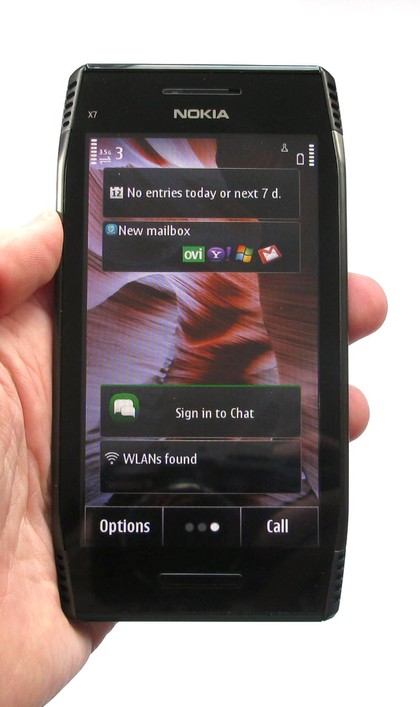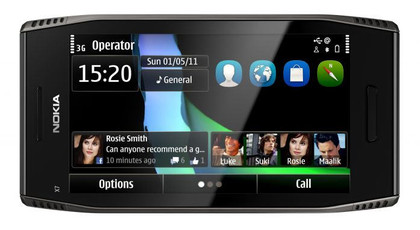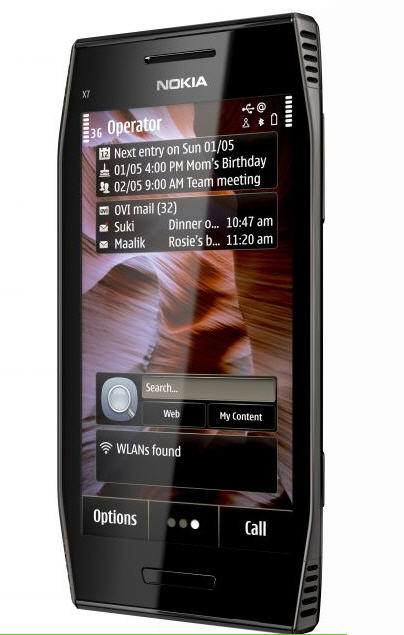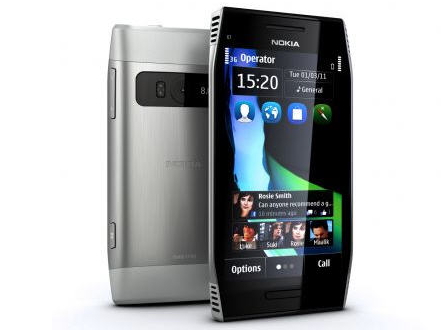TechRadar Verdict
A nicely built handset with a big screen and a lot of bases covered, but flaws detract from its allure
Pros
- +
Solid hardware
- +
Big screen
- +
Good sound output
- +
Better web browser
- +
OLED-powered contrast ratio
Cons
- -
Inaccessible battery
- -
Low screen resolution
- -
Not enough internal memory
- -
Fiddly microSD card slot
- -
Mediocre camera
Why you can trust TechRadar
The Nokia X7 ought to be a flagship smartphone – it has a vast screen, it runs a revamped touchscreen OS and it looks rather nice too.
OK, it isn't 3D capable like the LG Optimus 3D or the upcoming HTC Evo 3D, but it has an 8MP camera, super video playback and, at first glance, plenty of storage capacity.
The Nokia X7 runs Symbian Anna, a revamped version of Symbian ^3. Now, as Nokia is about to get all warm and cosy with Microsoft's Windows Phone 7 Mango, do we care that ^3 may have been improved from the rather disappointing baseline it set in handsets including the Nokia N8 and E7?
Well yes, we do actually. The X7 is in the wild, and it's only fair that we are interested in how well it performs.
We've nabbed a spot of video with the X7, so see how it fares in real-life use:
The X7 isn't a low-cost or budget handset by any measure of means. Our review sample came from Three, where it costs £380 on Pay As You Go and from £30 per month on contracts as we write, so it'll set you back a pretty penny. For that money you will expect a premium product.
Base specs are good. There's an 8MP camera, 8GB of storage courtesy of a microSD card (expandable to 32GB), GPS, Wi-Fi and HSDPA to kick things off.
Sign up for breaking news, reviews, opinion, top tech deals, and more.
And you get a fair slice of quality in the looks department too. The chassis has a rather pleasing design, with angled corners that look as though they house speakers in the sides. Well, two of them do. The other two? Well they're present for symmetry's sake, we suppose.

The top and bottom edges are flat as is usual for a handset, and the top edge houses the on/off switch, a 3.5mm headset connector and microUSB port.
The long edges are more curved and are made from metal that wraps round into the backplate. This is one of the factors that helps the Nokia X7 weigh a somewhat heavy 146g. While stylistically it looks good, the backplate does lead to a couple of shortcomings.

First off, you can't get at the battery, which is locked away behind that backplate. More important from an everyday perspective, the side buttons are tricky to access because they're set on a curve that runs away from your fingers.
The volume rocker on the right is slightly more difficult than usual to rock; plus the camera button, also on the right, is difficult to use.

On the left is the SIM slot, the cover of which we found impossible to remove, and a microSD card slot which we were able to get at.
The microSD card itself sits in a little holder that pops out of the chassis. You slide the card out of the holder if you want to hotswap. It's a faff and we'd have much preferred a simple hinged cover with a standard slotting mechanism.
Turning to the front, the 4-inch AMOLED touchscreen dominates. Under it there's a lozenge-shaped physical button that opens the apps menu. We like the minimalist approach.

The large screen means a large handset – at 119.7mm x 72.8mm x 119mm you'll have trouble reaching right across it if your hands are small.
As a piece the Nokia X7 is a solid-feeling, interesting-looking smartphone with a metal backplate that helps it retain a sturdy frame that should take plenty of knocks.

Current page: Nokia X7: Overview, design and feel
Next Page Nokia X7: Interface